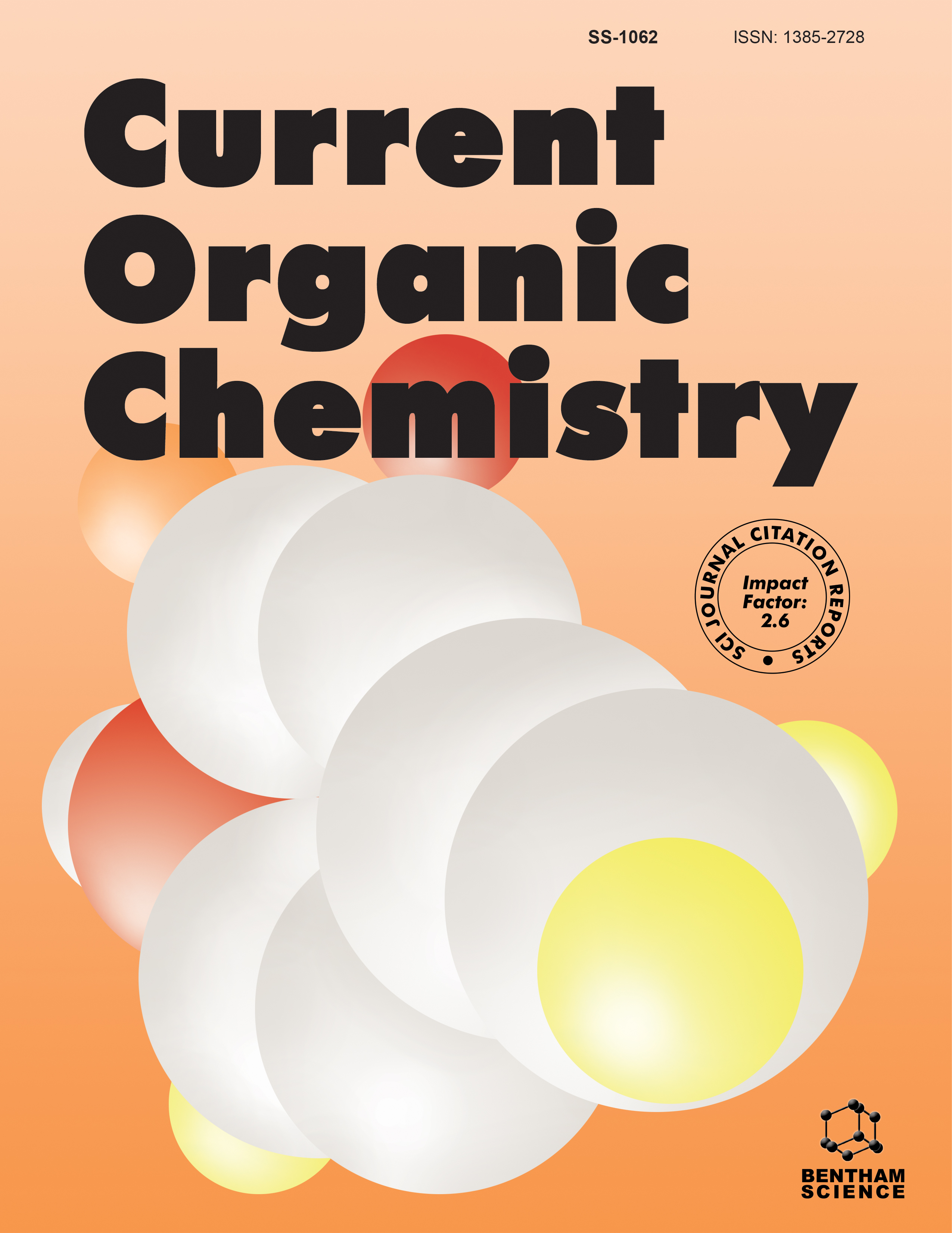- Home
- A-Z Publications
- Current Organic Chemistry
- Previous Issues
- Volume 26, Issue 15, 2022
Current Organic Chemistry - Volume 26, Issue 15, 2022
Volume 26, Issue 15, 2022
-
-
Hydrazonoyl Halides as Precursors for Synthesis of Bioactive Heterocyclic Compounds via Reaction with Aryl- and Hetaryl-Amine
More LessA literature survey revealed that a great deal of interest had been focused on the synthesis of functionalized heterocyclic compounds due to their wide range of biological activities such as antimicrobial, antitumor, anti-inflammatory, antiviral, antibiotic, antidepressant, antimalarial, antifungal and antihypertensive. Moreover, it is used as pharmaceuticals, agrochemicals and veterinary products. They are also found in sensitizers, developers, antioxidants, as corrosion inhibitors, as copolymers, and dyes. On the other hand, hydrazonoyl halides are interesting synthons for valuable bioactive heterocyclic compounds. Reaction of hydrazonoyl halides with various types of aryl-amines and hetaryl-amines generated a huge number of different heterocyclic systems. In this review, we collected all reactions of hydrazonoyl halides with aryl- and hetaryl amines and classified them according to the type of the amines up to the end of 2021. Most reaction types have been successfully applied and used in the production of biologically active compounds.
-
-
-
Synthetic Routes to Quinoline-Based Derivatives having Potential Anti-Bacterial and Anti-Fungal Properties
More LessAuthors: Shivangi Sharma and Shivendra SinghQuinoline and its derivatives are part of several natural products. Many of them are active pharmacophores and show enormous biological activities. Owing to their usefulness in drug discovery, we have discussed the plethora of quinoline derivatives showing particularly antibacterial and antifungal activities in this article. Depending upon substitution on the quinoline core, change of functionalities at different positions and change in chain length; unique biological properties are associated with such derivatives of quinolines and in this article, we have delineated the antibacterial and antifungal activities of such activities in detail. In most of the cases, it has been found that substitution at the 5-position leads to enhanced bioactivities. In most cases, 5-halo/5-amino/5-aryl and heteroaryl/5-carbonyl/5-amido show promising antibacterial and antifungal activities. Furthermore, the synthetic aspects of several quinoline derivatives showing antibacterial and antifungal activities are also discussed in this article.
-
-
-
Synthesis of Aryl/Heteroaryl Selenides Using Transition Metals Catalyzed Cross Coupling and C-H Activation
More LessAuthors: Debasish Kundu, Atanu Mahata and Totan RoyAryl and heteroaryl selenides are an important class of organic compounds and their synthesis has been widely studied all over the world in the last two decades. Transition metals catalysed cross-coupling and directed C-H activation in unactivated arenes in the presence of diselenides/aryl selenols are found to be the most important tools for their synthesis. In recent years different transition metal catalysts were found to be effective to perform C-Se crosscoupling in both aryl and heteroaryl rings. The present review article covers all the recent advances made in the last ten years in the field of the synthesis of aryl and heteroaryl selenides through homogeneous and heterogeneous transition metals catalyzed cross-coupling reactions and directed selenylation via C-H bond activations.
-
-
-
An Overview of Recent Advances in Isatin-Based Multicomponent Reactions
More LessIsatin has been widely deployed in multicomponent reactions to prepare diverse heterocyclic compounds, which have garnered the attention of organic chemists considering their anti-inflammatory, anti-microbial, and antiviral activities, among others. This review discusses the applications of isatin in multicomponent reactions from 2019 to 2022. Isatin has been used as a raw material in multicomponent reactions due to its diverse biological and therapeutic activities. This overview may help stimulate the readers to exploit such convergent strategies in their synthetic endeavors.
-
Volumes & issues
-
Volume 29 (2025)
-
Volume 28 (2024)
-
Volume 27 (2023)
-
Volume 26 (2022)
-
Volume 25 (2021)
-
Volume 24 (2020)
-
Volume 23 (2019)
-
Volume 22 (2018)
-
Volume 21 (2017)
-
Volume 20 (2016)
-
Volume 19 (2015)
-
Volume 18 (2014)
-
Volume 17 (2013)
-
Volume 16 (2012)
-
Volume 15 (2011)
-
Volume 14 (2010)
-
Volume 13 (2009)
-
Volume 12 (2008)
-
Volume 11 (2007)
-
Volume 10 (2006)
-
Volume 9 (2005)
-
Volume 8 (2004)
-
Volume 7 (2003)
-
Volume 6 (2002)
-
Volume 5 (2001)
-
Volume 4 (2000)
Most Read This Month


